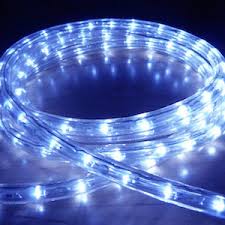Design Technical Considerations Many technical concerns must influence the decision on which LED driver or power supply to choose. This article will discuss the detail of those aspects on a temperately level to guide the best decisions for your LED applications.
Understanding the Basics
LED drivers are essential products that power LED lights, to make sure that they operate beneath the best possible situations. It takes care of the voltage required for the LED and prevents it from damaged by over-voltage and under-voltage. Meanwhile, power supplies convert the input power to an appropriate voltage and current to supply the drivers.
Main Specs & Options
Output Current and Voltage
Output current of LED drivers is usually from 350mA to more than 3A as per application. Residential and office lighting have primarily used drivers that require 350 mA to 700 mA, while industrial systems may require the SiC LED drivers to be above 1 A and as much as 3 A.
Different combinations of LED array can lead to significantly different voltage outputs. An individual LED may run on 2-3 volts, while LED arrays can need 12 volts or more. One has to make sure that the voltage output of the driver is matched to the voltage requirements of the LED setup to ensure efficient performance and prevent any damage.

Efficiency & Dimming Levels
Less Important: Power Supply Selecting a power supply - this may even be the least important feature of all. Newer LED drivers can have efficiencies as high as 95%. Such a high efficiency will guarantee that energy is being used to generate light, not wasted as heat.
Another necessary feature is dimming. Unlike other lighting components, LEDs and their associated drivers with integrated dimming capabilities can adjust light output from 0% (off) to 100% (maximum output) to provide both energy savings and flexibility of use. Different dimming methods such as PWM (Pulse Width Modulation), TRIAC, and DALI are available today suitable for diverse applications.
Safety Features and durability
If needed, LED drivers can be made to resist even the harshest of conditions. An even have a protection against dust, water, and collision. What Do IP65 and IP67 Mean on DriversIGPs, or ingress protection codes, such as IP65 or IP67, measure how well-protected the driver casing is, which is important for outdoors or in some industrial environments.
Also Important are safety certifications such asUL, CE and RoHS compliance. The certifications help guarantee that the products meet strict safety criteria and are free from hazardous substances such as lead or mercury.
Use Case Considerations
Selecting LED Drivers and Power Supplies - Application-specific Considerations:
For Retail & Display Lighting (Product illumination)Color accuracy & Dimming (Glare reduction)in display lighting is vital to add to the beauty of the product in contrast.
Street Lighting - durable weatherproofing, high output driver apartments are needed to operate difficult suspension.
Automotive Lighting: The drivers have to be very reliable and very small since they must fit inside a small space.
The choice of LED drivers, power supplies are critical in running your lighting systems efficiently and for extended duration. Let your facility benefit from your knowledge - combined with a few trends in key specifications and application-specific needs - you can improve installations, save on energy and reduce maintenance/maintenance costs.